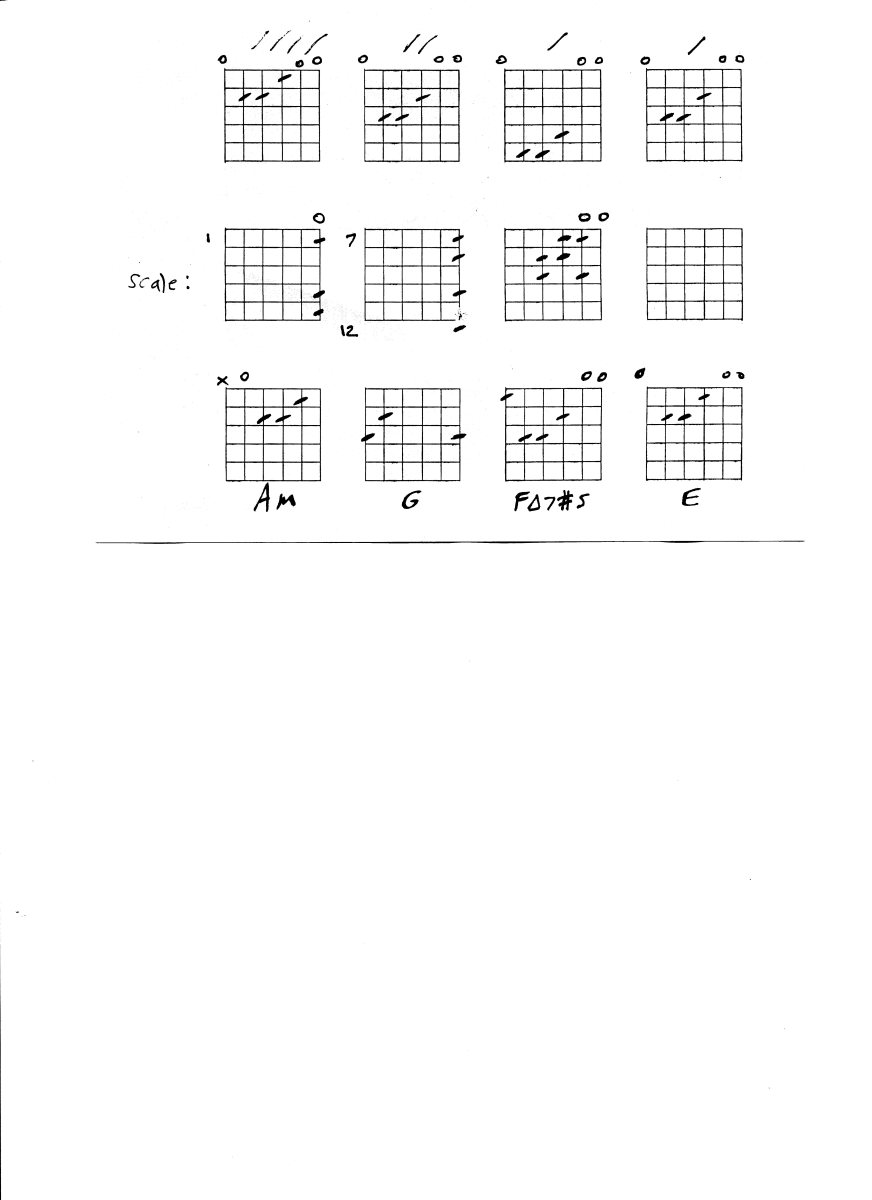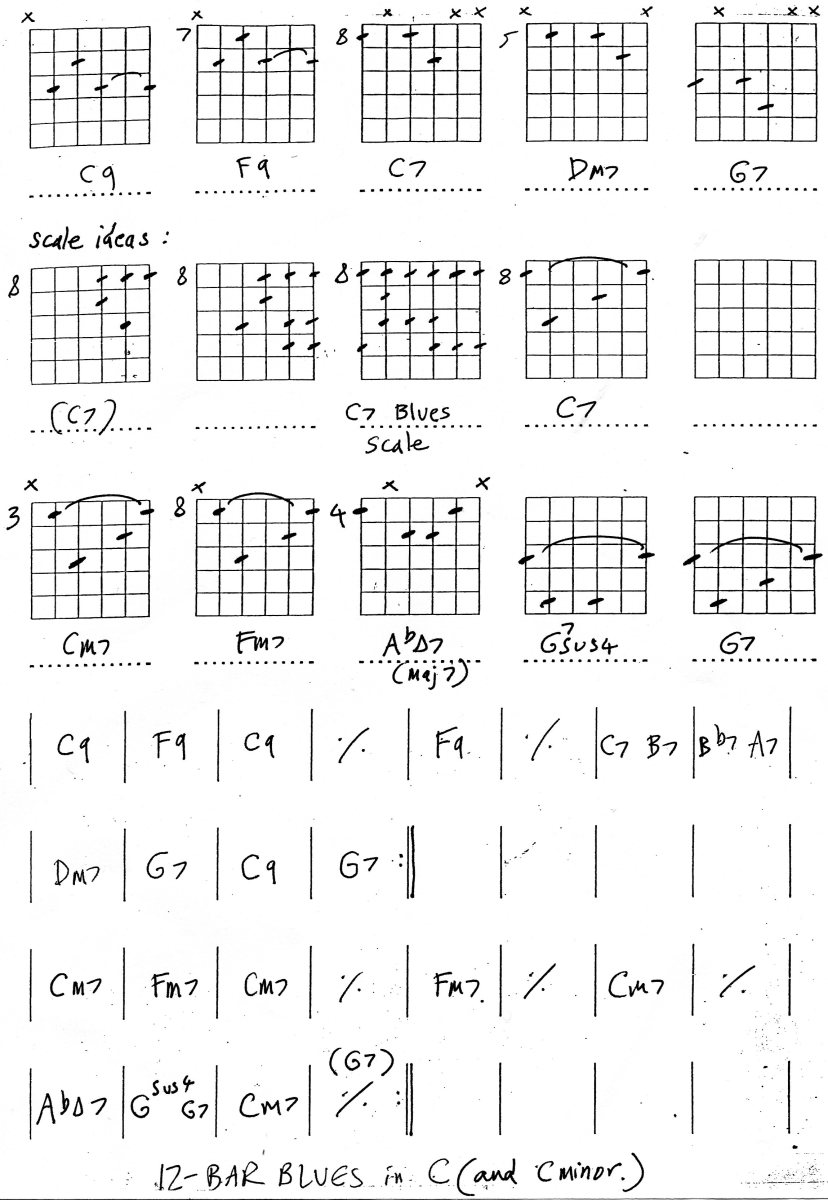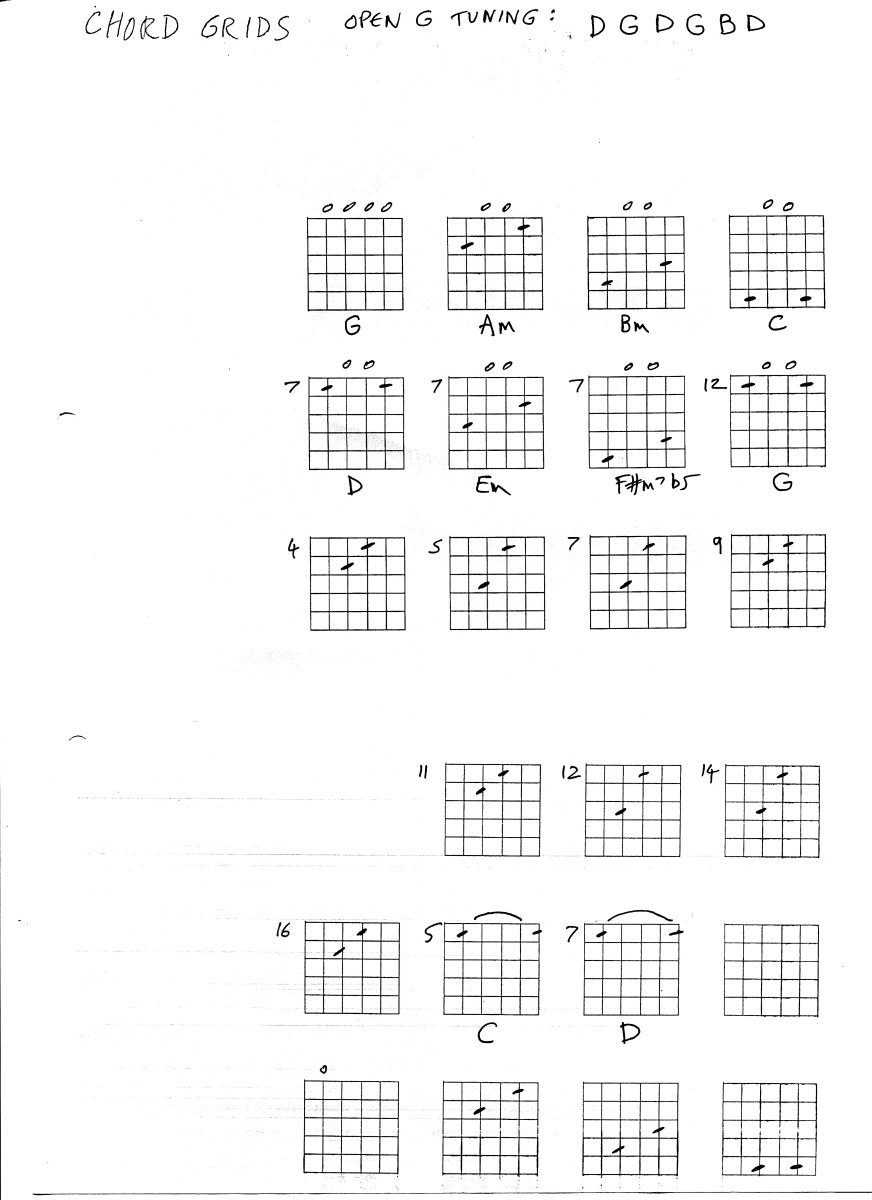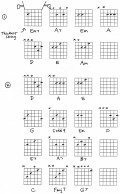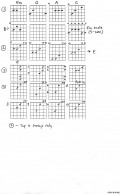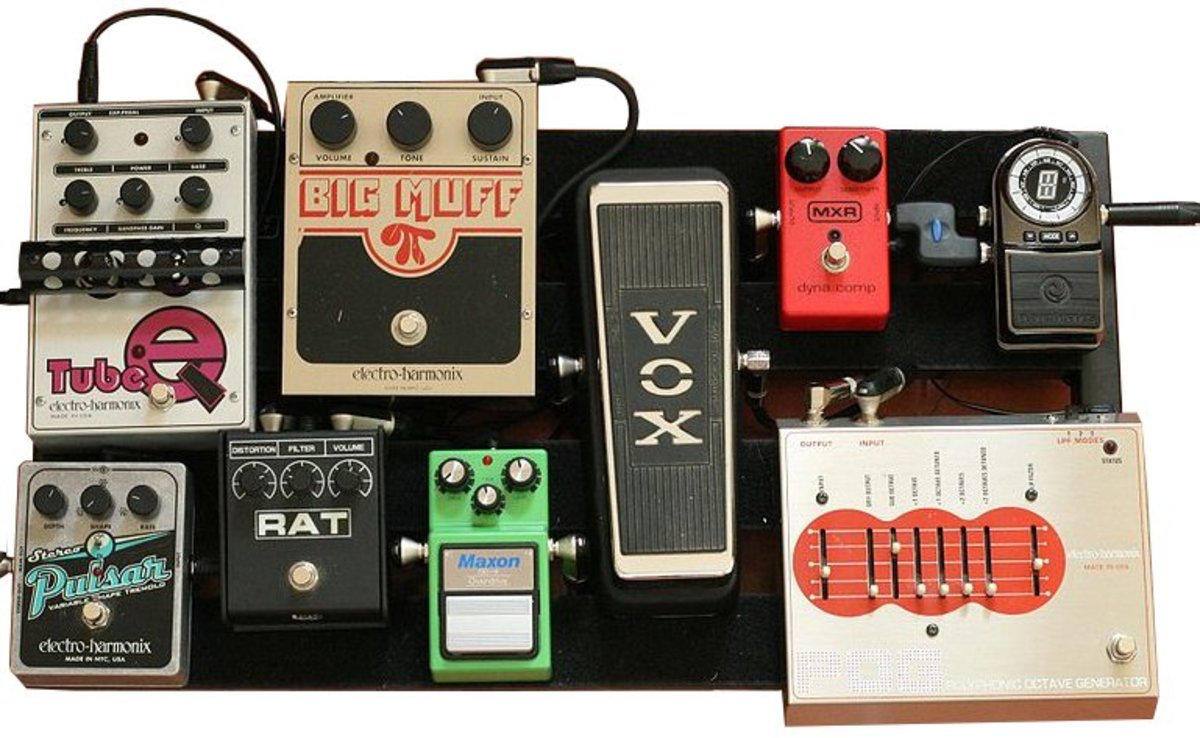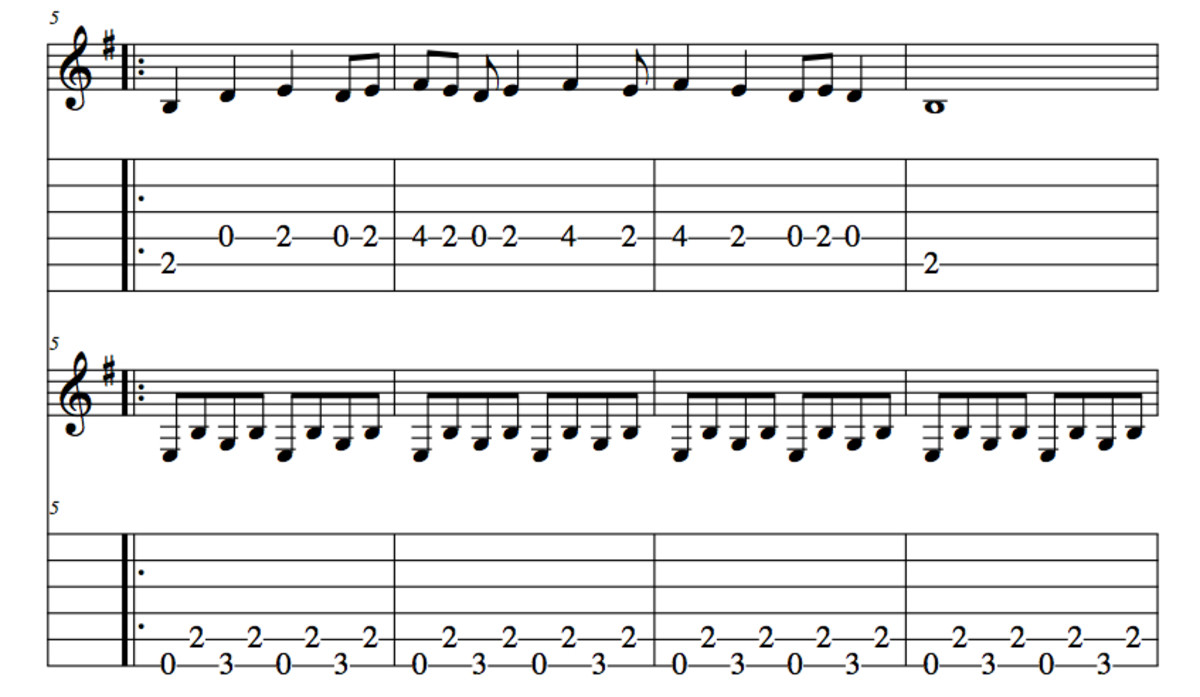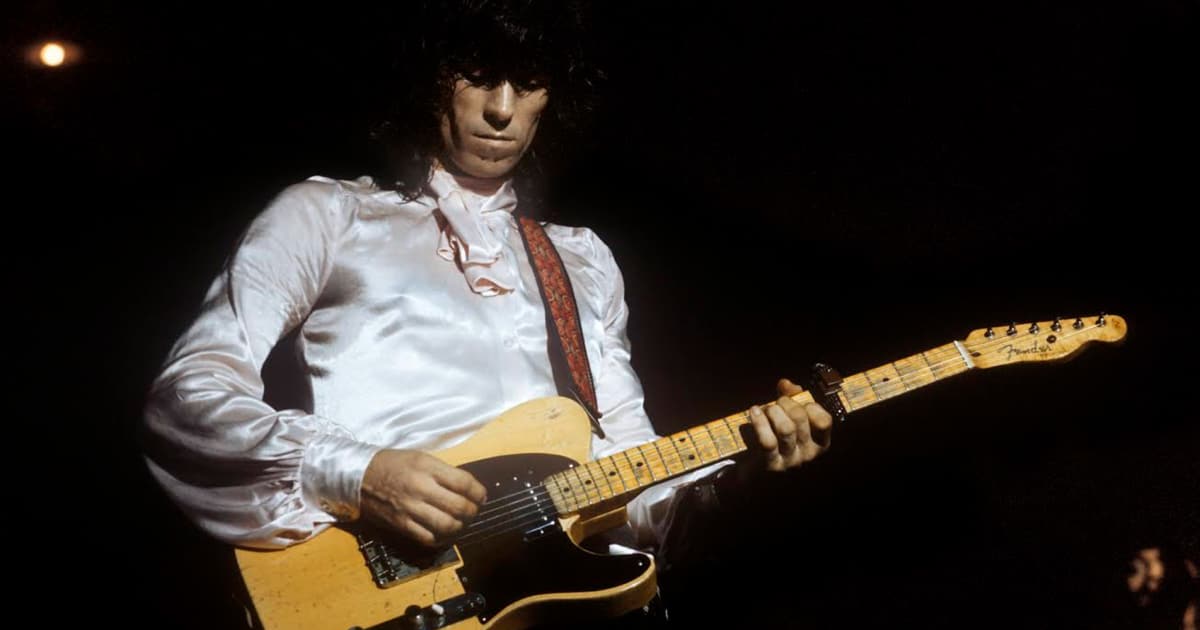Guitar Lesson, Harmonised Scales and Chords
Guitar chords and theory
This hub is Part 2 of a series, so check out Part 1 first - or just carry on with this one, I'll never find out. Here we are building on the basic major and minor chords in each key, but now there are two new developments:
- The chords have been improved with maj7 and 7ths added - this creates better harmony for pop, jazz, soul and Latin songs.You still have the option of using plain major and minor chords, depending on the context.
- A split point has been added, so instead of going up the fretboard, and eventually running out of space, the pattern is continued one string higher.
- This means that after 4 chords on one group of strings, the next four move up and across a string.
The 8 chords in each key, with 7ths.
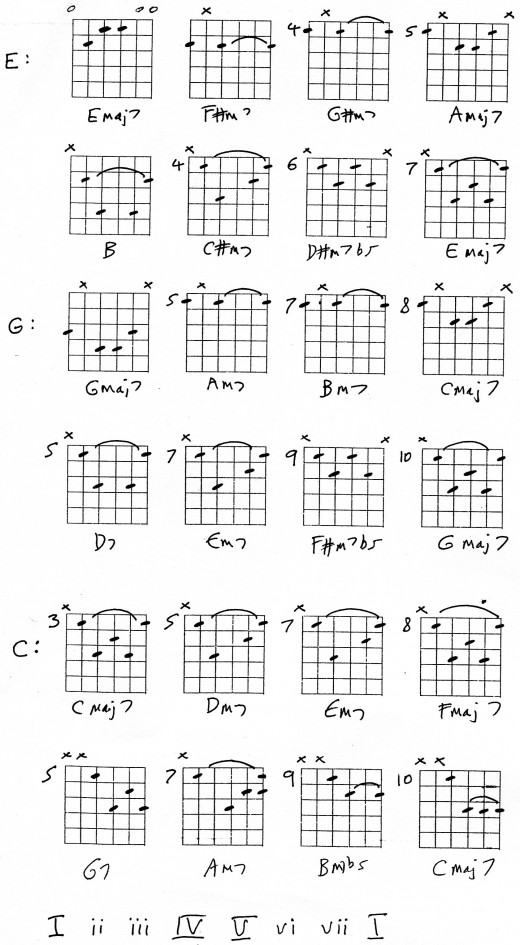
Playing tips
Strings marked with a cross should not be played. Although picking these with a fingerpicking style is a good idea, they can also be strummed. The loop symbol shows a barre type chord.
Chords 2 and 3 - this is a handy way to play a minor chord, with the thumb covering string 6 and a partial barre shape. The main advantage is that you have spare fingers available to add other notes, but it's also less tiring than a standard barre chord.
- At the bottom is a list of chord types - the pattern is the same for all keys.
- Note that chords I, IV and V are major, chords ii, iii, and vi are minor
- The first 8 chords are the harmonised scale in the key of E
- Next, the same chords in the key of G, with one or two small alterations. You could use the chord formation shown in the first box, (E maj7) but it's easier to use the other shape shown for G maj7.
Chords in C
- The chords in the key of C, the final 8 shapes, also cross a string group. The first 4 shapes are root 5, that is, the root note is the note on string 5, and this pattern is moved across to make string 4 shapes.
- The final chord shape is easier if you use your little finger to make the half-barre.
Other keys
I constantly try to get the most mileage out of a new chord shape, because it can save so much effort! Here are some ways that could apply this material to other keys:
- E to F is one fret, a semitone interval. So, if you move all the chords up one fret from the key of E, you get all the chords, at least all the diatonic chords, in the key of F. For chord one, use the shape for G maj7 - you can think of this as a recycled Am chord with an added bass note. Up one more fret would be F sharp, but we won't bother learning that as you will almost never encounter it in the real world of playing music.
- G to A is two frets up, or a tone. This is a very common key, so worth learning very well. All you need to do is move the G pattern of 8 chords, up two frets. An equally good alternative - take the chords in C, and move them down 3 frets. Both approaches are useful, and by comparing them you will understand the guitar fretboard much better.
- Chords in the key of D - just move the chords in C up 2 frets, as C to D is a two fret interval.
- Chords in Eb - just continue, up one more fret from D.

